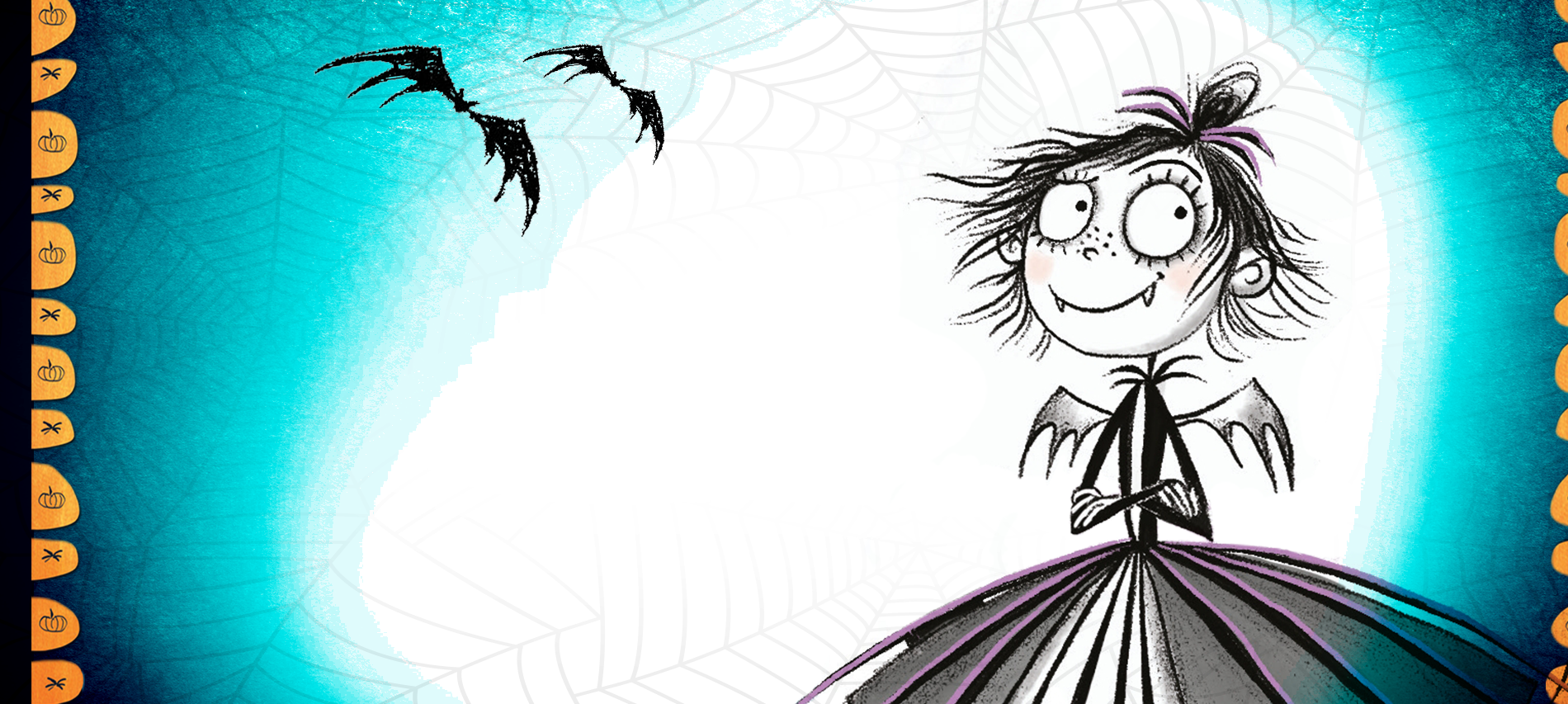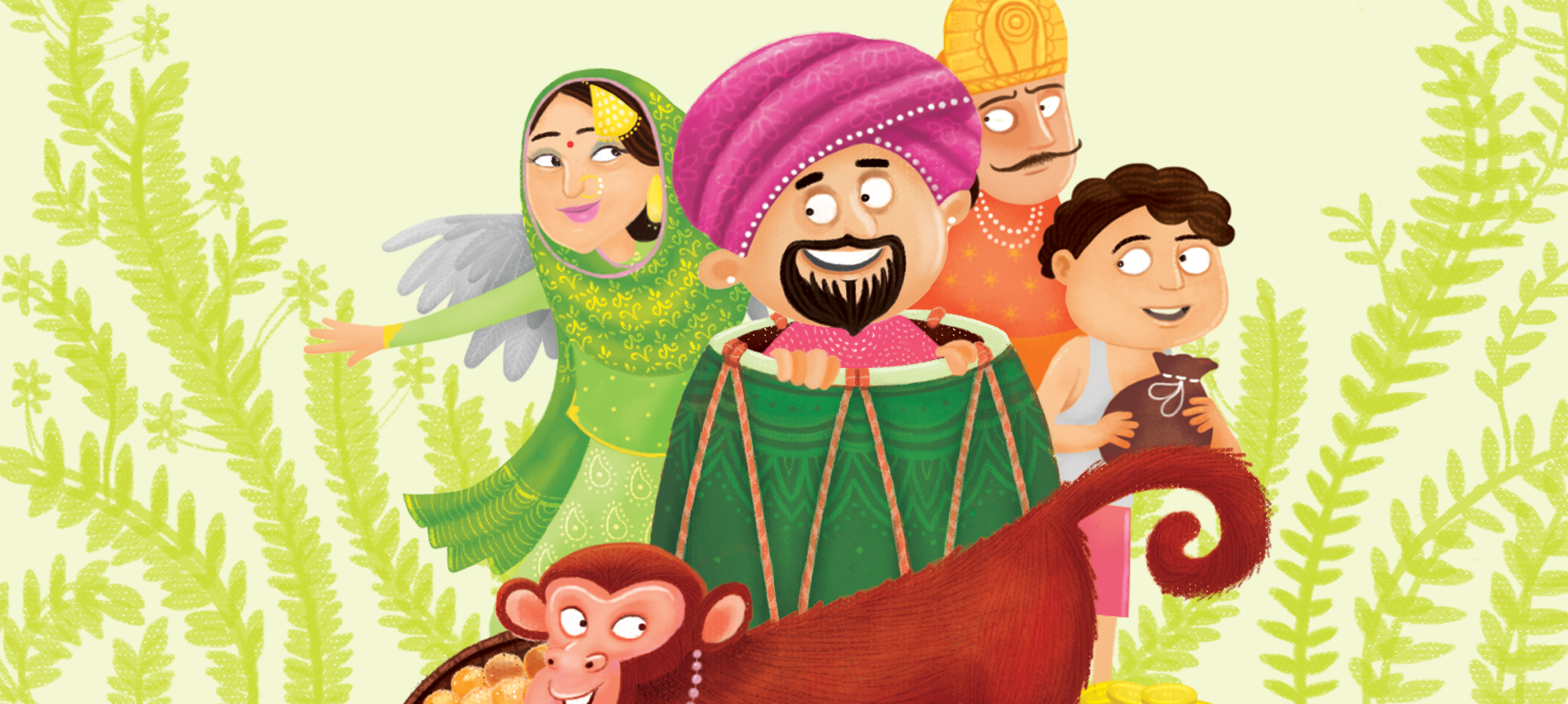Whether it’s the concrete jungles in cities or the fresh, clean air in villages, a world of fantasy opens up if we look for one. Sudha Murty’s magical collection of stories, where little Nooni from the city goes exploring the village where her grandparents stay, opens up a pandora’s box of wonderful memories of our childhoods!
Read this excerpt of a story from ‘The Magic of the Lost Temple’, about a king, women from the moon, a stepwell and the unfortunate downfall of his kingdom.
‘Ajji, tell me a story,’ Nooni insisted once the lights were off.
‘Nooni, aren’t you tired? I’ll tell you a story tomorrow.’
‘No, Ajji, I want to hear a story now. Ever since I have come to the village, you haven’t told me even one story,’ Nooni persisted.
Ajji got up and pulled the curtains aside. It was a full moon night and the moonlight came through the window into the room. ‘It’s as if a magic lamp has been switched on,’ thought Nooni.
‘I don’t see such bright moonlight in the city or in our house, Ajji. How has the moon lit the entire bedroom?’
‘You live in an apartment. Your bedroom faces another apartment complex and all the streetlights are on in the night. Then how will you see the effect of natural light in the city? Here, we have very few streetlights and there aren’t any highrise buildings. My room faces the garden where there’s open space and windows for the light to come in easily.’
‘Ah, now I understand, Ajji! Tell me a nice story about the moonlight then. I know you have a story for every occasion,’ grinned Nooni. Ajji smiled and said, ‘Of course. What I’m about to tell you happened a thousand years ago in this very village.
‘Long, long ago, there lived a handsome king named Somanayaka. He was brave, kind, courageous and very generous. His kingdom lay in the delta between the rivers Varada and Tungabhadra. There was a thick forest around the area and many wild animals lived there. Sometimes, they would enter villages and scare the people, destroy the crops and eat the cattle. After a number of such complaints and no improvement in the situation, the king decided to hunt these wild beasts himself. Two days later, he went hunting on his horse with his soldiers by his side. Soon, he had left his soldiers far behind and lost his way.
‘The day passed and turned into late evening. The king’s horse became tired and Somanayaka
tied him to a tree and went in search of food. He collected some fruits, ate them and brought some grass back for his horse. Suddenly, he felt very sleepy. It was a full moon night and the breeze was cool and pleasant. Somanayaka noticed a flat rock behind some bushes and decided to rest. Within minutes, he was asleep. Suddenly, he was awakened by the sound of girls chatting. He opened his eyes and glanced at the sky. To his surprise, there was a ladder coming down from the moon which joined some stairs that went all the way from the moon to the Earth. A group of beautiful women were coming down the steps. They all wore white saris and pearl ornaments and carried golden pots at their waists. He squatted near the bushes and counted them—they were seven in all. He wondered what they would do next.
‘As soon as they reached the Earth, the oldest woman touched the ground with a stick and he saw the ground give way and open up. All of them slowly disappeared inside the ground. Somanayaka was not scared but he was desperate to know where they had gone. Carefully, he came out of the bushes and peeped. Then he felt a little bolder and walked towards the big hole in the ground. He was surprised to find himself looking into an enchanting stepwell!’
‘Ajji, what is a stepwell?’ Nooni asked.
‘It is a well that has steps inside so that it is easy to get to the bottom. There are many stepwells in our country. In fact, some of them are very famous. Remember that picture of the well you sent me from your trip last year to Abhaneri near Jaipur?’
‘Oh, that’s true. There was a huge well there with almost three thousand steps. Are you talking about something similar?’
‘Yes, I haven’t seen Abhaneri myself and the one that Somanayaka saw was a small stepwell. It had only twenty-one steps. But there were seven small exquisitely carved Shiva temples inside the well. Somanayaka looked down and observed the stunning carvings and pillars and the beautiful angelic women. He enjoyed seeing them play hideand-seek for some time. Then they filled their pots with water, poured it on an idol of Lord Shiva and performed a puja. The whole process took several hours. By then, the sky started getting lighter as it was daybreak and the moon started fading. Somanayaka hid behind the bushes again. Soon, the women climbed the steps and went back to the moon. The steps disappeared and the ground closed up.
‘Somanayaka sat in the bushes for a long time. Suddenly, he felt confused. Had it been real or had it all been a figment of his imagination? Did he really see the ground open up and a well underneath? He stood up and came out of the bushes. He searched everywhere for a sign of the well but with no luck. There was not a single remnant of the incident he thought he saw. “I must have been so tired that I slept off . . . and had such an elaborate dream that I thought that it was real,” he said to himself. He turned and started walking back to his horse. Suddenly he saw something sparkling on the ground—it was a broken pearl necklace. Somanayaka collected all the pearls and realized that it hadn’t been a dream after all.
‘He tried to recall if he had ever heard about a stepwell in his kingdom but nothing came to mind. By then one of his followers had traced him and come to his rescue. But Somanayaka told him, “Go back and inform everybody that I am safe. I will stay here for a few days. Give me your food ration before you leave. I know the route and I will come back on my own.”
‘The next day, he waited near the bushes again, but nothing happened. He waited for one more day and still, the women did not appear. After another uneventful day, he thought of other possibilities, “Maybe these beautiful maidens come only on full moon days.”
‘Keeping that in mind, he got on his horse and went back to the capital. He met the royal astrologer and found out the date of the next full moon night.
‘When the night came, he waited behind the bushes and this time, he was not surprised when the ladder came down from the moon. He knew the whole process by now and looked forward to the puja of Lord Shiva. Somanayaka was an ardent devotee of Lord Shiva. After the puja, he decided to take a chance and meet the maidens. Boldly, he came forward and stood near the stepwell. “Beautiful maidens, please don’t be alarmed. Here’s my pranaam to all of you.” He folded his hands together and continued, “You have chosen our land for your worship of Lord Shiva and I am really grateful to you. I have noticed that when you go back, the ground closes on its own. May I earnestly request you not to make the well disappear? Please keep it open so that everyone can worship Lord Shiva in this beautiful ambience.”
‘The women looked up at him in fright. It was a rude shock for them to see Somanayaka there and they gathered closely together. Then the eldest maiden took the lead and said, “Who are you? Why have you been observing us without our knowledge? This stepwell was built by a great architect of the celestial heavens. It can’t be used by the selfish people of Earth.”
‘Somanayaka bowed his head and said, “My sisters, I am Somanayaka, the ruler of this land. I know that this holy stepwell couldn’t have been made by human beings. But Lord Shiva is fond of all his devotees, isn’t he? Please grant me my wish. If you have any conditions, please tell me and I will fulfill them.”
‘The maidens spoke to each other in hushed whispers. Then the eldest one said, “We are impressed by your humility and your prayer. The water here tastes like nectar. That is Earth’s specialty. Even though we live in the celestial world, the water there isn’t as tasty as what we get here. So, we come every full moon night not to take a bath or spoil the well but to just drink and enjoy ourselves.
As long as you promise me that you will not dirty the premises and that this water will be used only for drinking, we will leave it as it is. People of your land can come and worship and take the water but before entering the stepwell they must take a bath and wash their feet. If your people do not follow the rules, the well will disappear along with your kingdom. Think about it. It is a big price to pay. Are you ready to take the risk of losing your kingdom?”
‘Somanayaka thought for a minute and said confidently, “A source of water is a source of life. I will ensure that all your conditions are taken care of.”
‘The maiden continued, “We have one more condition. On full moon nights, the temple must remain closed so that we can continue our visits here. Nobody must be allowed inside to observe us or talk to us. We want our privacy to be protected.”
‘Somanayaka agreed. He stepped forward and gave back the necklace to the maiden. He said gently, “I think this belongs to one of you.”
‘The women were very happy with his honesty. They drank the water, climbed the steps and vanished. The stepwell remained where it was.
‘Somanayaka went to the nearest water body to have a bath and then he entered the stepwell for the first time. It was much more beautiful from up close. When he reached the bottom, he cupped his hands and drank a sip of water. It was very tasty. He felt that it was better than nectar, which he had never drunk before anyway.
‘The next day, he came back to the kingdom and proclaimed, “There exists a beautiful stepwell of Lord Shiva in our kingdom. People who would like to go there and perform puja can do so but on one condition—they have to bathe and cleanse themselves before entering the stepwell. The water there will be used for no other purpose except for drinking. Everyone can carry away one pot of water and no more. These rules are to be strictly followed and there will be no exceptions. The temple will remain closed on full moon nights and nobody will be allowed inside.”
‘Somanayaka wanted to make his people comfortable so he ensured that there was another water body for them near the stepwell. There, people could bathe, change their clothes and then enter the stepwell. The news spread like wildfire. People came from all over the kingdom to see the architectural masterpiece and pay their respects to Lord Shiva. The well remained open on all days except on full moon nights.
‘Days passed and word spread. People started coming from far and wide and from different lands. A small tourist spot was set up near the stepwell and named Somanahalli.
‘Despite the increase in the number of visitors, the well was kept clean and guards monitored the premises around the clock.
‘After some years, Somanayaka married a lovely lady—Queen Ratnavati. She was beautiful and courageous but headstrong. Somanayaka told her about the way the well had been discovered and how the celestial maidens had agreed to his request. Ratnavati wanted to know whether the maidens were more beautiful than her or not but she knew that she would never get a chance to meet them because they came only on full moon nights when no one was allowed inside the temple.
‘One day, the king had to go to an important event in the neighbouring kingdom. Ratnavati told her husband, “I am not feeling very well. I think that I will stay back in the palace.”
‘The naive king believed her and departed for the event. As soon as he left, Ratnavati called for her chariot and headed towards the stepwell. She thought to herself, “I am the queen of this land. Every inch of it belongs to me. So what if the well is a gift of the maidens? The well exists on my land and I am the legal owner. My husband doesn’t want to take a risk and obeys those maidens’ words without question. I want to show him that nothing will happen if we break their rules.”
‘When the charioteers reached Somanahalli, the officers stopped her and requested, “O Queen. Please don’t visit the temple today. It is a full moon night and as per the government rules, no one is allowed to go inside. Why don’t you stay in the guest house tonight? You can visit the well tomorrow.”
‘Ratnavati did not listen to them. “How dare you stop me? I am the queen. Everything is under my control.” ‘Without another word, she barged into the stepwell. Since it was a full moon night, the entire complex was shining like silver. The water was shimmering and looked irresistible. She went into the water to bathe. Suddenly, she heard a noise. When she turned, she saw seven women standing on the steps. Though her heart told her that they were more beautiful than her, her ego did not allow her to accept the truth. When the maidens saw Queen Ratnavati in the water, they became upset. “Who are you? How dare you come here today? Has King Somanayaka forgotten our conditions?”
‘Arrogantly, Ratnavati replied, “I am his queen. This land belongs to us and I make the rules—you can come the day I want you to visit. You can’t tell me when I can and can’t come here. The water here is the way it is because of the Earth and not because of anything you did.”
‘“Who are you to talk to us like this? You have not only disobeyed our rules but you have also dirtied the water. Once someone has bathed in this water, no one can drink it again.”
‘The women turned to leave. While going up the steps back to the moon, the eldest maiden said, “Rani Ratnavati, you are going to regret this.”
‘They climbed the ladder and vanished. Queen Ratnavati tried to get out of the water to go behind them and talk to them but all her efforts were in vain.
‘Suddenly, there was thunder and lightning, followed by a huge gust of wind and rain. Ratnavati quickly climbed up the steps of the well. The earth quaked and within a few seconds, the well closed.
‘The queen was scared. She had been warned of the consequences—she was going to lose her kingdom! She cried to herself and said, “I should not have done this. I have polluted the water and disobeyed my husband. I have destroyed my kingdom because of my arrogance.”
‘Somanayaka never came back from his travel and Ratnavati went mad crying in the streets. After a few days, nobody heard from her again. The kingdom was eventually abandoned. It was sad that the queen, who should have been the protector of her kingdom, had destroyed a precious water source, disobeyed royal orders, broke a promise and caused such a catastrophe.
‘People say that our village, Somanahalli, is near the location of the stepwell. This story has been passed down from generation to generation but no one has actually seen the well.’
Ajji finished the story. Nooni looked at the moon with sleepy eyes, waiting for the maidens to appear.
More such enchanting stories await you and your little one with Sudha Murty’s ‘The Magic of the Lost Temple’.
And don’t forget to pre-order our favourite storyteller’s newest collection of magical stories!































